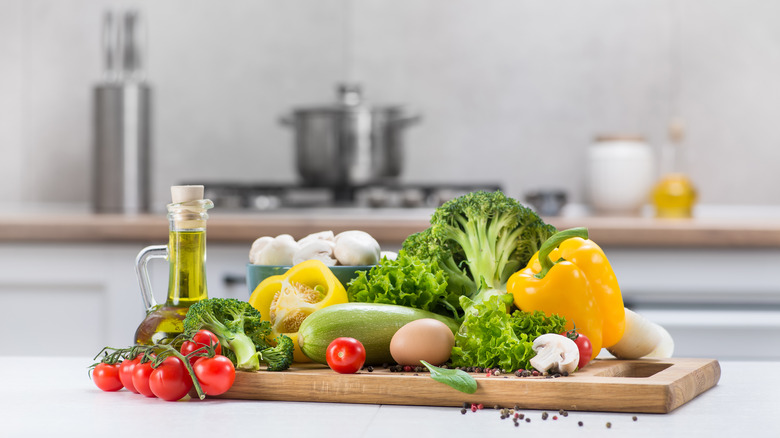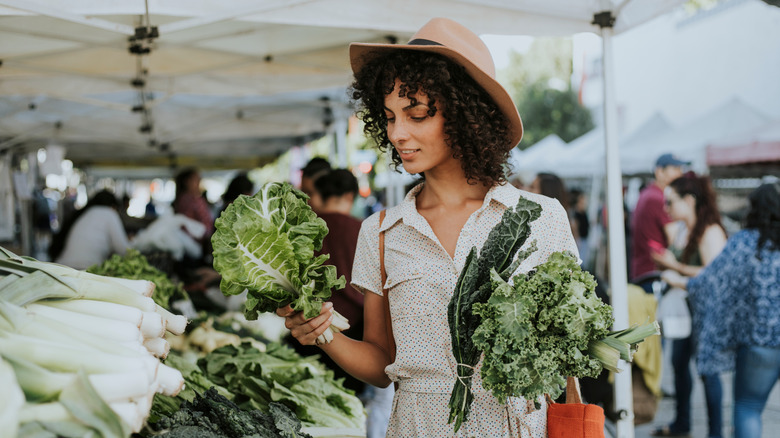The Water Rule You Need To Know To Avoid Ruining Your Veggies
Everyone has heard about the importance of staying hydrated, but what if you could replace a glass of water with a handful of vegetables? According to Ontario Equestrian, celery, cucumber, iceberg lettuce, tomato, and zucchini all consist of 90% water. Raw broccoli, green cabbage, cauliflower, eggplant, and spinach also contain huge water reserves and by eating these select veggies, you can stay hydrated throughout the day (via Livestrong). While these staples have the potential to add some extra water into your daily diet, their coveted moisture content can also ruin a dish if handled improperly.
According to Bon Appétit, a vegetable's water content determines how quickly it browns and if it expels its water content first. Generally, produce that contains a higher water content cooks quicker than a dryer vegetable, but also lacks the potential to get as brown and crispy. On the flip side, dryer vegetables like potatoes take longer to cook, but get brown and crispy much faster. This general rule gets even more nuanced when you compare cooking methods for vegetables that contain similar, yet noticeably different amounts of water.
Comparing spinach and kale
When you try to cook leafy greens, you end up handling vegetables with substantial amounts of water, but that doesn't mean each item cooks up the same way (via Bon Appétit). Spinach contains 91% water, while kale consists of 84% water. While both items contain a large percentage of moisture, they act very differently when cooked. Spinach wilts and ends up as a soggy mess in the oven, while kale turns into crispy chips with the same cook time and temperature. Conversely, spinach added to a soup cooks down quickly, while kale remains stiff and needs much more time to achieve a similar consistency, according to Bon Appétit.
Next time you want to experiment in the kitchen, keep this handy vegetable hydration rule in mind. If some of your ingredients expel too much water, it could spell disaster for the rest of your dish. On the other hand, no one wants to eat undercooked, crispy potatoes, beets, and other dryer vegetables. Don't take any risks and make sure you know how much water each piece of produce contains before it hits the pan.

